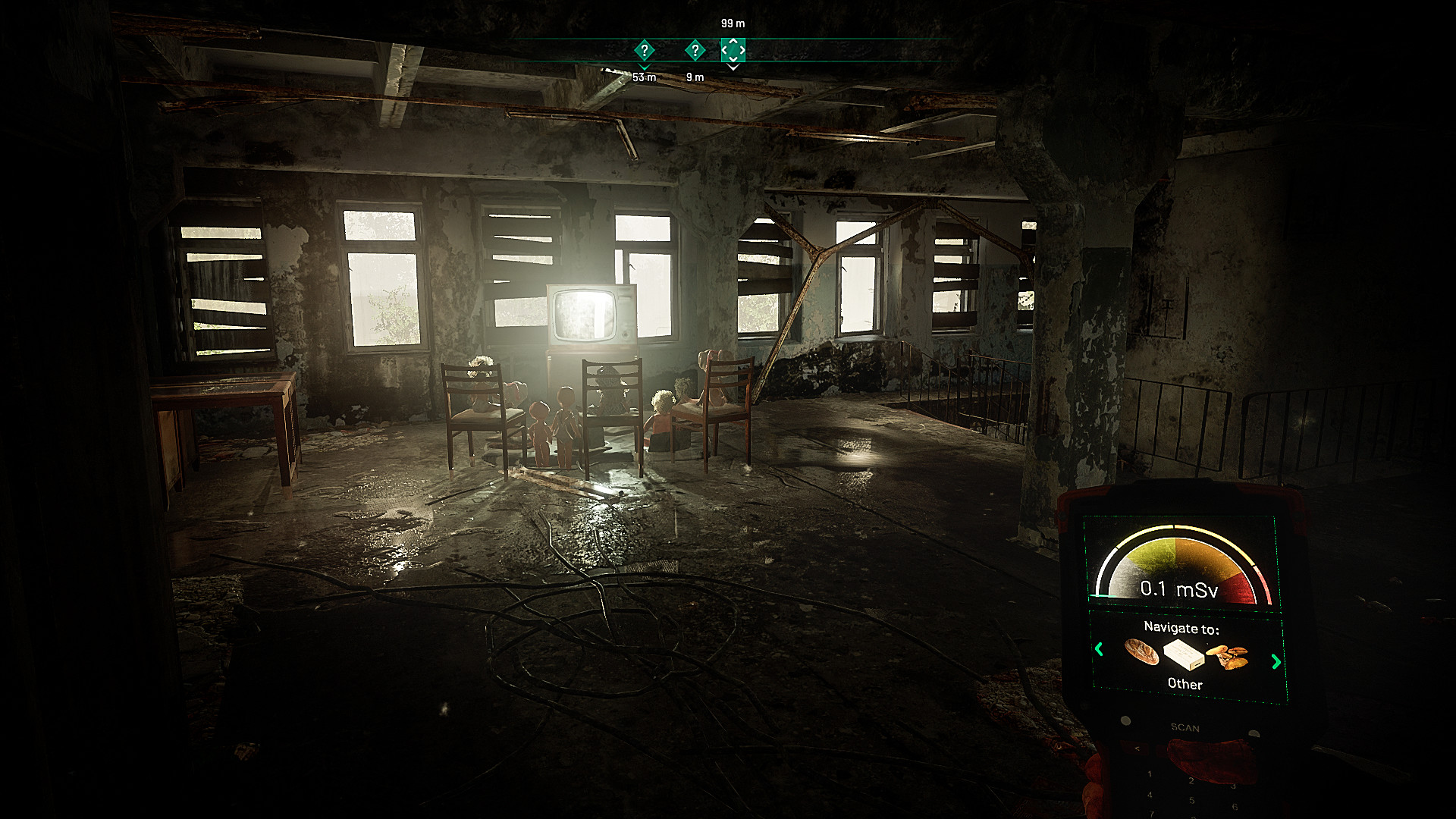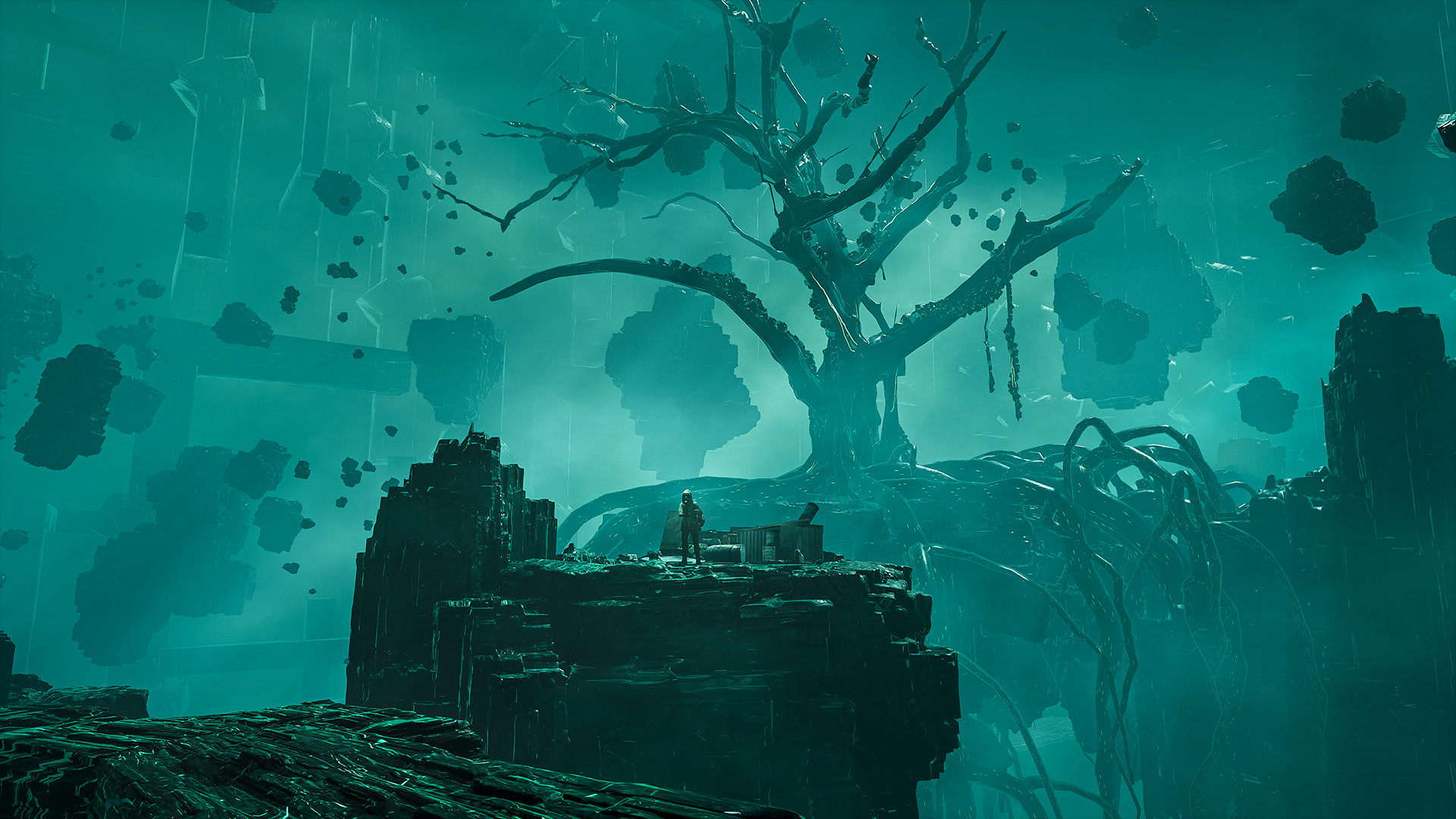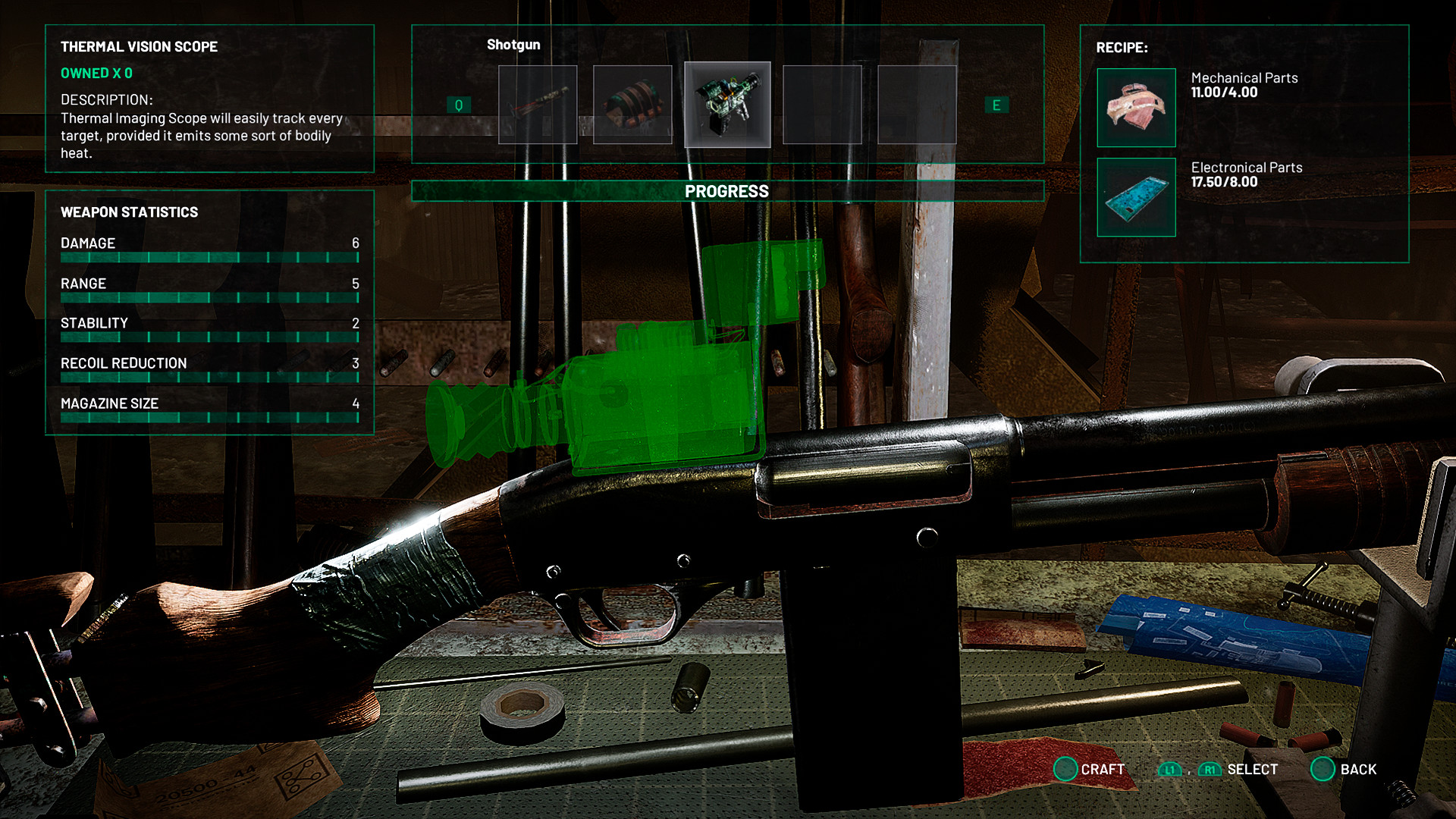Our Verdict
An ambitious and atmospheric adventure undercut by some simplistic mechanics.
PC Gamer's got your back
What is it? A non-linear shooter with a focus on survival and player choice.
Expect to pay £24/$30
Developer The Farm 51
Publisher All in! Games SA
Reviewed on Ryzen 7 5800H, Nvidia GeForce 3070 (mobile), 16GB RAM
Multiplayer? No
Link: Official site
Chernobylite is a curious mash-up of ideas orbiting a pretty stiff first-person shooter, not unlike The Farm 51's previous game Get Even. But where Get Even felt like a game that couldn't get its ideas in order, coming across as aloof in its attempt to tell a poignant story, Chernobylite does a much better job of welcoming us into its world.
Its melancholy atmosphere permeates you like plutonium, confronts you with big decisions at every turn, and surrounds you with a well-written (though sometimes terribly voiced) core of grizzled stalkers who you'll need to befriend as you chase spectral visions of your long-lost wife around the Chernobyl Exclusion Zone. As physicist and former Chernobyl Power Plant employee Igor, this is why you've returned to the haunted area.
It's part first-person shooter, though it's quite possible to sneak through much of the game without firing a single bullet. It's part base-building survival game, as you gather resources to improve your base with crafting stations, bedding, and even mushroom gardens (mushrooms, it turns out, are integral to crafting everything from wooden walls to handheld nuclear weapons). It has some throwaway horror elements too, because apparently that's mandatory in any Chernobyl-based media.

But most successfully, Chernobylite is a game about choice, where you're constantly faced with decisions that may (or may not) meaningfully affect your story.
Early in the game, for instance, I killed a sketchy stalker who refused to give up information. Previously, I took the humane option with someone, and wound up trapped in a room fast filling with poison gas, so this time I took no chances. I killed them in cold, mildly irradiated blood, looted their corpse, and made my way back to base. Later on, I met a character who was very close to the sketchy stalker, forcing me to choose between lying or coming clean about my murderous whoopsie, and whether to invite them to join my group. Obviously, I went for the drama-baiting combo of lying and inviting them to my ragtag crew.
Interestingly, you don't have to stick with your choices. You see, Chernobylite is a substance that can open wormholes in time and space. It can teleport you from one place to another, or even let you revisit old memories via a dreamscape of floating rocks and non-Euclidean geometries. Each time you die, you wake up in this dreamscape where you can see how the key decisions you made are connected, and go back and change those decisions using Chernobylite shards as payment to whatever interdimensional god-force is running the show.

It's pretty ballsy for a game to lay bare the workings of its choice system like this, but given the breadth of Chernobylite's web of choices and possible outcomes, the devs have every right to want to show it off. Your choices will affect enemy activity in the area, how many allies you have in the Zone, and at one point even the topography of the game—you can, for instance, destroy the infamous Duga radar at the behest of a man believing himself to be in a good-vs-evil conflict with a Rat King.
It's a good kind of strange.
The Farm 51 actually went to the Exclusion Zone and used 3D scanning to recreate its terrain, textures and buildings.
Between missions you hang out in your base, where you can cook, build improvements, explore other peoples' memories based on clues you find, or even just go straight to the Heist mission at the end of the game (where you'll almost certainly die if you've not assembled a crew and equipment, but it's there if you want it). When you're ready, you pick a mission set in one of six regions around the Zone—whether to progress the main story or search for clues. At the same time, you can send out your companions to scout future missions or gather resources.
These maps aren't huge, but they look wonderful. The Farm 51 actually went to the Exclusion Zone and used 3D scanning to recreate its terrain, textures and buildings. It gives the areas an intense verisimilitude that I can't stop snapping—grass and shrubbery reclaiming blocky clusters of Soviet apartments, smashed stained glass windows depicting doomed communist utopias, smoggy sunlight oozing through sickly canopies. As someone mildly obsessed with the crumbling vestiges of the Soviet empire, I find these environments mesmerising.

Beautiful and haunting though these areas are, they are a little lacking in substance. The only things you find are resources and clues relating to your story, there is no wildlife (even though the Exclusion Zone is renowned for it) and enemy AI rigidly sticks to their patrol routes or stands in one place—never sitting at desks or fighting radioactive monsters or taking a wazz. Friendly trader stalkers, meanwhile, simply stand around waiting for you to come to them. The developers could certainly have picked up a few tricks from Stalker: Shadow of Chernobyl and its sequels about how to make the Zone feel more dynamic.
The combat gets a bit tangled between realistic shooter, stealth and RPG. Beyond a rather pathetic side-dash, there are no mechanics like sliding or cover-firing, while leaping over obstacles is very particular about what it counts as obstacle. I appreciate how easily enemies blend with the dense foliage, but this is undermined by the big healthbars that pop up above their heads, and their substantial bullet absorbance makes the mechanically 'meh' gunfights drag on a little too long.
Thankfully, stealth is a viable approach, so I focused on upgrading my revolver with a silencer and becoming a master of silent takedowns. Again, though, this feels a little threadbare as you can't hide bodies (not that the enemy AI is particularly miffed when they stumble upon the corpse of one of their own). It all speaks to a combat system that's stretched between multiple styles without particularly excelling in any of them.

What really gives Chernobylite its soul are the people you recruit to your base. There are five in total, each with their own traumas, missions and strange tales to tell. They range from stoic types straight from Chekhov stories to varying degrees of psychopath, but spend some time with them between missions and all these miscreants will end up growing on you.
I became particularly fond of Mikhail, blaring like a drill sergeant about everything from his father's boozy transgressions, to tarot readings, to an anecdote about radioactive sausages distributed throughout the Soviet Union—I imagine he'd be a great drinking partner until his eyes go wild and he insists you go with him to blow up an army barracks in the middle of the night.
It's solid, engaging writing, though I recommend using the Russian audio with subs unless you want Igor to push his voice like an over-eager Oxford academic from half a century ago.

You'll need to keep up your crew's morale by keeping them well fed, sufficiently bedded, as well as managing their disagreements when they chime in on key story decisions. Do you shoot down a helicopter without knowing who's in it? Is a friendly stalker fair collateral when taking out an enemy encampment? To whom do you hand the gun to finish off a key villain (if indeed you choose to execute them at all)? All genuine quandaries, where sometimes you'll be swayed by having to keep one character or another onside so that they're still with you come the final mission.
There are a few quirks in Chernobylite that seem to exist to tick certain boxes. It's been termed 'survival horror', but monster encounters are scarce, and beyond that the occasional jump-scare, creepy doll and hallucination of a jittery man in a gas mask don't really justify the label—if anything, they cheapen the experience. Similarly, the Black Stalker who beams himself into maps on a timer in later missions is more a nuisance than a threat when you realise he's rooted to the spot and can be blasted away. Mr. X he most definitely is not.
Maybe Chernobylite latches onto these recognisable tropes because its greatest strengths aren't easily conveyed through trailers or genre tags. Its cast of characters and its choice system are genuinely gripping, while its depiction of the zone is at times breathtaking (if a little postcardy and non-interactive). Like its motley crew of eccentric companions, Chernobylite is a flawed misfit that I can't help but like. With its sometimes scatty systems, ambition and silly sci-fi story, it could even join the pantheon of Eurojank classics—unless there's a rule against Eurojank games looking this good.
An ambitious and atmospheric adventure undercut by some simplistic mechanics.
Robert is a freelance writer and chronic game tinkerer who spends many hours modding games then not playing them, and hiding behind doors with a shotgun in Hunt: Showdown. Wishes to spend his dying moments on Earth scrolling through his games library on a TV-friendly frontend that unifies all PC game launchers.


